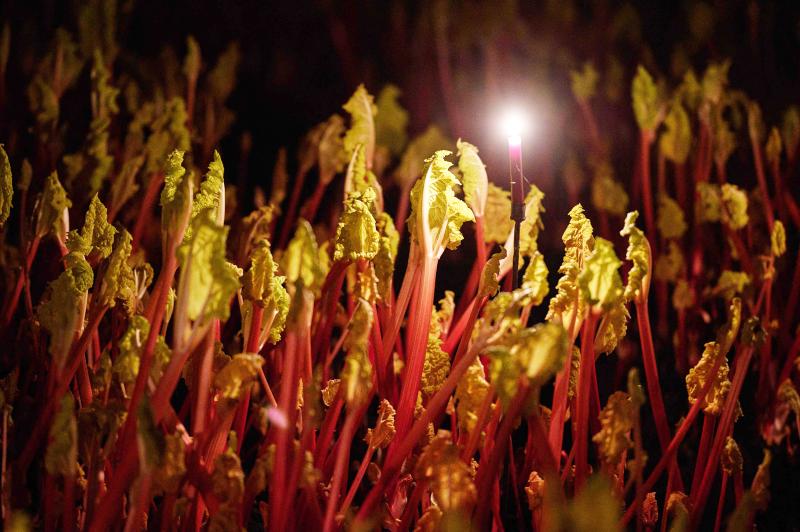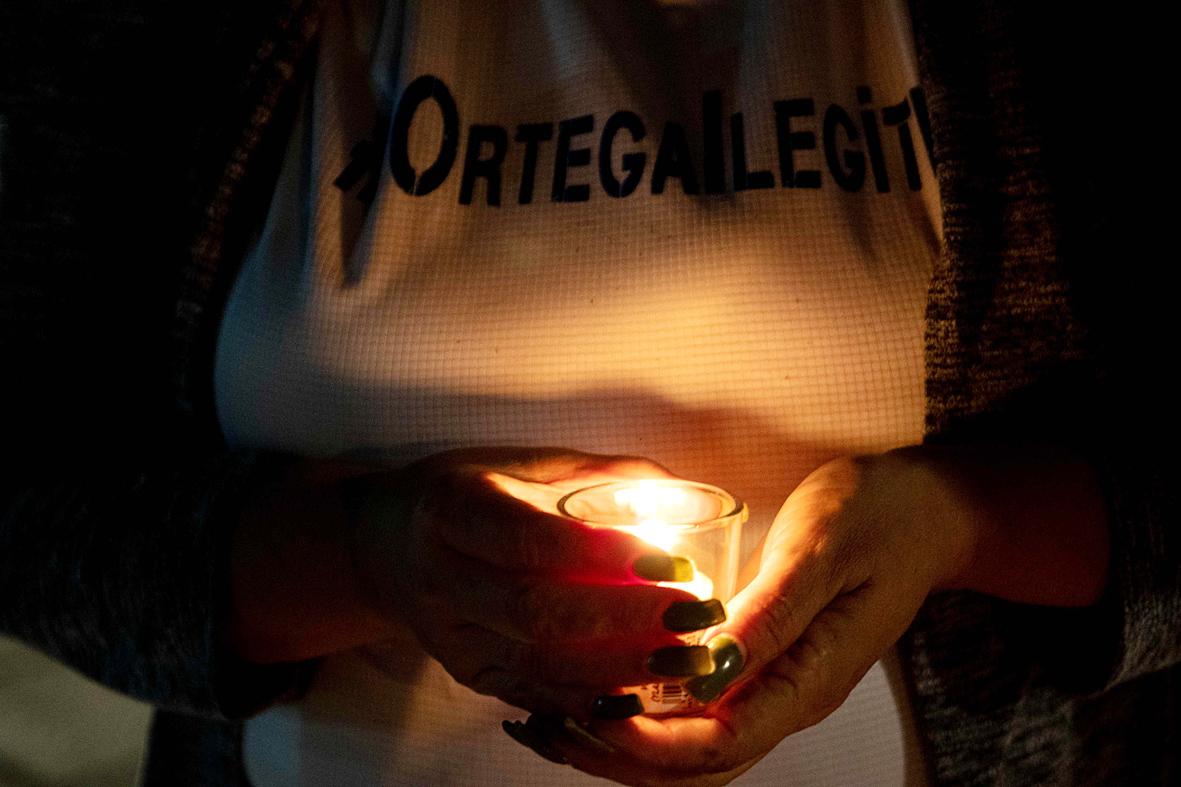From menopause calendars to menopause scented candles, and menopause supplements to menopause spa breaks, there is no shortage of products to help ease a woman’s transition into her post-reproductive years. If you’re after something stronger, how about vaginal rejuvenation laser treatment or bioidentical oestrogen? You could even try to postpone menopause for a decade or so — provided you are willing to freeze a slice of your ovary in your 20s and then have it grafted back on in later life.
Menopause is enjoying a moment. After centuries of enduring the rollercoaster of physical and emotional symptoms that often accompany it, middle-aged women have never been so well-catered for with products purporting to help. But is this sudden choice empowering, or just exploitative?
Half the world’s population will experience menopause and, according to one recent report, the global menopause market represents a US$600 billion business opportunity. Dietary supplements, symptom-tracking apps, telemedicine and cosmetics represent some of the biggest investment prospects.

Photo: AFP
“Women in this life stage continue to be sorely underserved,” says Adrianna Samaniego, an investor at the US venture capital company the Female Founders Fund (FFF), which produced the report. “And it’s not like the maternity experience where it’s nine months — this can last for 10 to 30 years.”
MENOPAUSE GOLD RUSH
But while medical experts are delighted that common symptoms such as night sweats, heavy bleeding, anxiety and low libido are being discussed more openly, and welcome the development of workplace programs to better support women, some are concerned by the apparent menopause gold rush that is under way.

Photo: AFP
“Overall, it is absolutely brilliant that so many more people are talking about menopause, but I think it’s getting too complicated, too medicalized and too commercial,” says Heather Currie, an associate specialist gynecologist at Dumfries & Galloway NHS, and managing director of the menopausematters Web site.
“When I was experiencing symptoms five years ago, I couldn’t get hormone replacement therapy (HRT) from my GP” says Louise Newson, a GP, menopause specialist and founder of the Menopause Charity, who has set up a private menopause clinic, would have spent thousands on anything to save my job as a doctor, and to save my marriage, because I was really struggling.”
Menopause occurs when a woman’s periods stop and her ovaries cease producing significant amounts of the hormones estrogen and progesterone. This can occur naturally, due a diminishing number of eggs — usually between the ages of about 45 and 55 — or it can occur prematurely, if the ovaries are surgically removed, for example, or damaged by treatments such as chemotherapy or radiotherapy.

Photo: AFP
Estrogen affects the body in many ways — from brain function, to bone density, skin elasticity, vaginal lubrication and the distribution of fat — so losing it causes our organs and tissues to behave differently. However, this transition does not occur overnight. Perimenopause refers to the time leading up to a woman’s last menstrual period.
“During that time, women’s hormones are very variable,” says Paula Briggs, a consultant in sexual and reproductive health at Liverpool Women’s NHS Foundation Trust and chair elect of the British Menopause Society. These fluctuating hormone levels underpin some of the symptoms women experience, such as heavy and/or irregular periods, heart palpitations or mood swings.
As perimenopause progresses, women may experience other symptoms, such as hot flushes, night sweats, sleeplessness, skin irritation, anxiety or a reduced interest in sex — some of which may continue even after a woman stops having periods.
“Very few women will get away without anything at all,” says Briggs.
Post-menopause, hormone levels tend to be low and more stable, but this too can create problems. In the short term, falling estrogen levels affect the part of the brain that controls body temperature, resulting in hot flushes and night sweats. Many women will experience vaginal dryness, itching or pain during sex, which, left untreated, may increase the risk of recurrent urinary tract infections.
Longer-term, low estrogen affects the strength and density of bones, putting women at greater risk of osteoporosis, fractures and chronic pain. It may also cause changes that make women more vulnerable to heart disease and stroke.
HORMONE REPLACEMENT THERAPY
For centuries, many women suffered this transition in silence but, today, there are broadly two “camps:” those plumping for hormone replacement therapies (HRT) to alleviate their symptoms, and those seeking alternatives to hormone treatment.
The history of HRT began in the early 1940s but it wasn’t until the 60s that the use of HRT became widespread.
Various studies began to suggest that HRT might have other benefits, such as the prevention of osteoporosis or cardiovascular disease.
This illusion was shattered in 2002, with the publication of the Women’s Health Initiative (WHI) study, which found that HRT actually increased the risk of coronary heart disease and heart attacks, and also breast cancer and stroke — although the risk of colorectal or endometrial cancer and osteoporosis was reduced. The results triggered panic among many HRT users.
“There was a 70 percent or greater decline in the use of prescription menopausal hormone therapy,” says JoAnn Manson of Harvard Medical School and Brigham and Women’s Hospital in Boston, US, a principal investigator on the WHI study since its inception in the early 90s.
This sudden rejection of HRT left a large vacuum in terms of treatments for women.
“Companies rushed in to fill the void,” says Manson. “They were not required to list the potential risks. They did not have to put a black box warning on compounded bioidentical hormone therapy, for example, or on these over-the-counter products that are untested for either safety or efficacy.”
It does appear that some women benefit from taking such products. For instance, a 2016 review in the Journal of the American Medical Association (Jama) found that phytoestrogens (plant-based compounds that mimic the effects of estrogen in the body), such as soy extracts or herbal remedies, including red clover and black cohosh, were associated with modest reductions in the frequency of hot flushes and vaginal dryness but produced no significant reduction in night sweats.
“However, because of general suboptimal quality and the heterogeneous nature of the current evidence, further rigorous studies are needed,” its authors said.
The National Institute for Health and Care Excellence (Nice) also states that black cohosh or St John’s wort may relieve hot flshes and night sweats. However, “the quality, purity, constituents and safety” of complementary products “may be unknown, and different preparations may vary,” it said.
“I think the assumption is that if you can buy something over the counter, it’s safe, but that’s not necessarily so — and you wouldn’t necessarily get the same level of consultation as if you spoke to a health professional,” says Briggs. “Black cohosh can be toxic to the liver, depending on the concentration, and St John’s wort is an enzyme-inducing drug, so it can interfere with other medications. Phytoestrogens like red clover are OK, but you wouldn’t take them if you’d had estrogen-receptor positive breast cancer — because it could stimulate any residual cancer cells to grow.”
‘BIOIDENTICAL’ THERAPIES
Then there are compounded “bioidentical” hormone therapies beloved of celebrities such as Oprah Winfrey — plant-based preparations promoted as being identical to human hormones. Crafted into bespoke creams, lozenges or vaginal preparations by “specialist pharmacies” — often following costly blood or saliva hormone tests — they are sometimes painted as a natural or safer alternative to standard HRT.
“These are not regulated, they’re not licensed, and they come under supplements, so they don’t have to follow the same standards as regulated hormones to be produced,” says Newson. Neither do you have to be a doctor to prescribe them. “I think a lot of it is a big marketing ploy, because people have been scared off HRT.”
In their efforts to avoid conventional HRT, some women who are experiencing vaginal or bladder symptoms are resorting to expensive “laser vaginal rejuvenation” treatment. This involves creating “micro-abrasions” to stimulate the production of collagen and boost the blood supply.
Although some studies have suggested that laser rejuvenation may help to alleviate some symptoms, the evidence for this is mixed: one study published in Jama in October found that so-called “fractional carbon dioxide laser treatment” may be no better than a placebo. There are also concerns that laser treatment could be harmful in some situations. In 2018, the FDA issued a statement warning about the possibility of burns and scarring as a result of it.
Laser therapy may not be necessary. If over-the-counter lubricants and moisturizers don’t help, low-dose vaginal estrogen delivered as a cream or pessary often proves an effective treatment. Because the hormone is released locally “it doesn’t raise the blood level of estrogen above what is considered the normal menopausal range,” says Manson. “Local estrogen is very effective and it’s safe for most women.”
Evidence is also mounting that some of the fears about HRT may have been overblown. “Many of the risks [identified in the original studies] were driven by women who were more distant from the onset of menopause when they started hormone therapy — particularly women who were at least 70 years old when they were enrolled in the trial,” says Manson. “Women in their 50s tended to do quite well. They even had a signal for a lower risk of heart disease and all-cause mortality.”
Also, the HRT formulations available today are different from what was available to those women enrolled in the WHI study.
Alongside this, women are often given capsules of progestogen — similar to the progesterone that women naturally produce during their reproductive years — to counter the effects of estrogen on the lining of the uterus and reduce the risk of cancer.
HRT isn’t risk-free, but then no medical product is. Newson argues women should be allowed to take HRT for life if they want to.
“Menopause is a hormone deficiency, but people have been scared away from their own hormones because of poor data, and because of scaremongering in the media and medical press,” she says.
SKIN IN THE GAME
Because Newson runs a private menopause clinic she, arguably, has commercial skin in the game. She balks at this, pointing out that she channels some of the proceeds into her not-for-profit enterprises, such as the Menopause Charity and the balance menopause app. She claims she set up her private practice because women have often struggled to find help within the NHS, and “have nowhere else to go.” Also, because there aren’t enough dedicated menopause clinics for specialists like herself to secure NHS jobs. However, that’s starting to change.
“For some women, it might depend on who they’ve seen,” says Currie. “To counteract that, there’s huge amount of education going on with the aim of women being able to get consistent advice wherever they are in the country.”
If a woman’s GP isn’t helpful, she advises asking if anyone in the surgery has a special interest in menopause, or to be referred to one of the regional menopause specialist services that exist in many areas of the UK.
HRT isn’t the only option, though, and with recent publicity around the benefits of HRT from celebrity advocates such as Davina McCall, some experts feel that the pendulum is now starting to swing too far in the opposite direction.
“I’m now seeing women who often have significant health problems, who are being led to believe that HRT will miraculously cure them,” says Briggs. “Some of that is coming from celebrities who often have a very different lifestyle from the patients I’m dealing with.”
She is anxious that the overprescribing of hormone therapies could trigger the same sort of crash as the publication of the WHI study did in 2002. She says: “I think there’s a lot of us who are feeling very uncomfortable — largely around very high [hormone] doses being used, lack of progestogens, testosterone by the shedload. Of course, HRT might be appropriate, but it might not be.”
But pills and procedures are only part of the solution. “Menopause is a natural life stage for the majority of women, and it needs to be embraced and managed, rather than treated as a disease,” says Irene Aninye, director of science programs at the Society for Women’s Health Research, which recently recommended preparing women early (as young as 35) for better health during the menopause transition and beyond.
“This transition is different for everybody, and how your body responds to it is affected by your overall health and any specific conditions you may have,” Aninye says. A woman who is overweight or unfit is likely to gain more from healthy eating and exercise than taking hormones. Eating a healthy diet and taking regular exercise will also help guard against the longer term consequences of low oestrogen, such as cardiovascular disease and osteoporosis.
“What is needed,” says Briggs, “is a situation where menopause is talked about so that people know what’s likely to come, and they can make informed decisions about how they want to manage that part of their life.”

In 1990, Amy Chen (陳怡美) was beginning third grade in Calhoun County, Texas, as the youngest of six and the only one in her family of Taiwanese immigrants to be born in the US. She recalls, “my father gave me a stack of typed manuscript pages and a pen and asked me to find typos, missing punctuation, and extra spaces.” The manuscript was for an English-learning book to be sold in Taiwan. “I was copy editing as a child,” she says. Now a 42-year-old freelance writer in Santa Barbara, California, Amy Chen has only recently realized that her father, Chen Po-jung (陳伯榕), who

Jan. 6 to Jan. 12 Perhaps hoping to gain the blessing of the stone-age hunter-gatherers that dwelt along the east coast 30,000 years ago, visitors to the Baxian Caves (八仙洞) during the 1970s would grab a handful of soil to bring home. In January 1969, the nation was captivated by the excavation of pre-ceramic artifacts and other traces of human habitation in several caves atop a sea cliff in Taitung County. The majority of the unearthed objects were single-faced, unpolished flake tools fashioned from natural pebbles collected by the shore. While archaeologists had found plenty of neolithic (7,000 BC to 1,700

Famed Chinese demographer Yi Fuxian (易富賢) recently wrote for The Diplomat on the effects of a cross-strait war on demography. He contended that one way to deter the People’s Republic of China (PRC) is by putting the demographic issue front and center — last year total births in the PRC, he said, receded to levels not seen since 1762. Yi observes that Taiwan’s current fertility rate is already lower than Ukraine’s — a nation at war that is refusing to send its young into battle — and that its “demographic crisis suggests that Taiwan’s technological importance will rapidly decline, and

When the weather is too cold to enjoy the white beaches and blue waters of Pingtung County’s Kenting (墾丁), it’s the perfect time to head up into the hills and enjoy a different part of the national park. In the highlands above the bustling beach resorts, a simple set of trails treats visitors to lush forest, rocky peaks, billowing grassland and a spectacular bird’s-eye view of the coast. The rolling hills beyond Hengchun Township (恆春) in Pingtung County offer a two-hour through-hike of sweeping views from the mighty peak of Dajianshih Mountain (大尖石山) to Eluanbi Lighthouse (鵝鑾鼻燈塔) on the coast, or